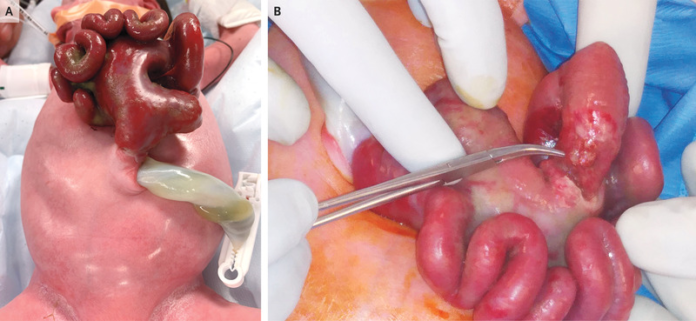Closed gastroschisis in neonate
This article describes the case of a male neonate who presented with a narrow stalk of small bowel and proximal colon protruding through a defect in the abdominal wall. The neonate was born at 37 weeks of gestation. For further evaluation, doctors advised a prenatal ultrasonography. Based on the findings, the neonate was diagnosed with gastroschisis.
Examination showed that the area where the defect was traversed by the bowel, the jejunem was atretic, whereas the colon was stenosed. Gastroschisis is the congenital evisceration of the intestines through an abdominal wall defect. Usually, the defect is located on the right side of the umbilical cord. However, is rarely located on the left side in a mirror image position. In very rare cases, the defect closes itself around the eviscerated organs. This is referred to as closed gastroschisis.
Organs that commonly eviscerate through the defect include the intestine and stomach.
Although, occasionally other abdominal organs such as the ovaries. Further examination showed a perforated cecum with the proximal jejunum ending blindly within the abdomen. Treatment included suturing the colonic perforation and closing the abdomen. 19 days later, doctors performed another laparotomy to repair the jejunal atresia and colonic stenosis. The boy was transitioned from parenteral nutrition to enteral nutrition at 27 days and discharged. At this point, the patient was 1-month old.
In extremely rare cases, the defect closes itself around the eviscerated organs and causes an exit or entry level ischemia. Nearly 6% of all cases of gastroschisis are closed or closing gastrochisis. Similarly, in some cases the whole midgut is lost, this is referred to as vanishing midgut. The closure can be complete or incomplete with a variable sequence affecting the bowel loops. However, the sequence of events and whether the closure of the defect is the primary event or occurs as a result of loss of the eviscerated bowel is not well known.
References
Closed Gastroschisis https://www.nejm.org/doi/full/10.1056/NEJMicm2029281




